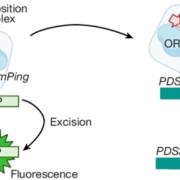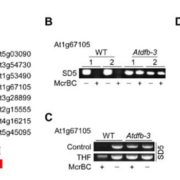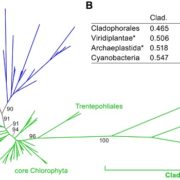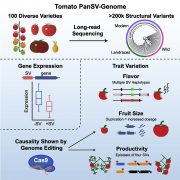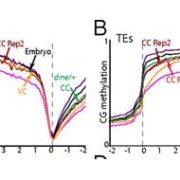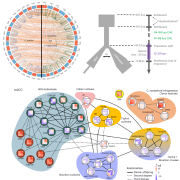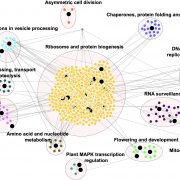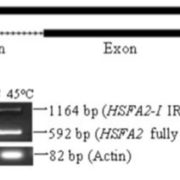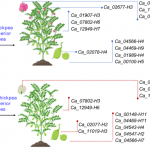One assembly closer to understanding centromeric evolution in Arabidopsis thaliana (Science)
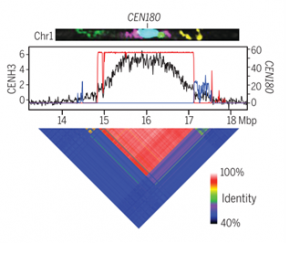 Centromeres are chromosome regions that consist of tandemly repeated “satellite arrays” and harbor CENH3 centromeric histones. Centromeres are present in every eukaryotic cell and are important for kinetochore assembly, so they ensure chromosome segregation during cell division. In spite of the importance of this structure, its evolution has remained obscure partly because of the challenge in sequencing these long and highly repeated sequences. Recently, this challenge has been overcome by new sequencing technologies. In this article, Naish and collaborators created a reference sequence of Arabidopsis thaliana centromeres, which are mainly composed of CEN180 satellite repeats. They successfully identified a library of 66,131 CEN180 repeat units and found that each chromosome presents a different arrangement of repeats and variants, suggesting different stages of adaptation and evolution. They also found that centromeres are invaded by young ATHILA retrotransposons, suggesting that retrotransposon insertion can influence centromere divergence. Finally, they found that the presence of CENH3 decreases non-CG methylation; similarly, methylation limits initiation of double strand breaks, the precursors of crossover events. These data suggest that the balance between the homogenization of CEN180 satellites and retrotransposon invasion drives centromeric evolution. (Summary by Rigel Salinas-Gamboa @Rigelitactica) Science 10.1126/science.abi7489
Centromeres are chromosome regions that consist of tandemly repeated “satellite arrays” and harbor CENH3 centromeric histones. Centromeres are present in every eukaryotic cell and are important for kinetochore assembly, so they ensure chromosome segregation during cell division. In spite of the importance of this structure, its evolution has remained obscure partly because of the challenge in sequencing these long and highly repeated sequences. Recently, this challenge has been overcome by new sequencing technologies. In this article, Naish and collaborators created a reference sequence of Arabidopsis thaliana centromeres, which are mainly composed of CEN180 satellite repeats. They successfully identified a library of 66,131 CEN180 repeat units and found that each chromosome presents a different arrangement of repeats and variants, suggesting different stages of adaptation and evolution. They also found that centromeres are invaded by young ATHILA retrotransposons, suggesting that retrotransposon insertion can influence centromere divergence. Finally, they found that the presence of CENH3 decreases non-CG methylation; similarly, methylation limits initiation of double strand breaks, the precursors of crossover events. These data suggest that the balance between the homogenization of CEN180 satellites and retrotransposon invasion drives centromeric evolution. (Summary by Rigel Salinas-Gamboa @Rigelitactica) Science 10.1126/science.abi7489


